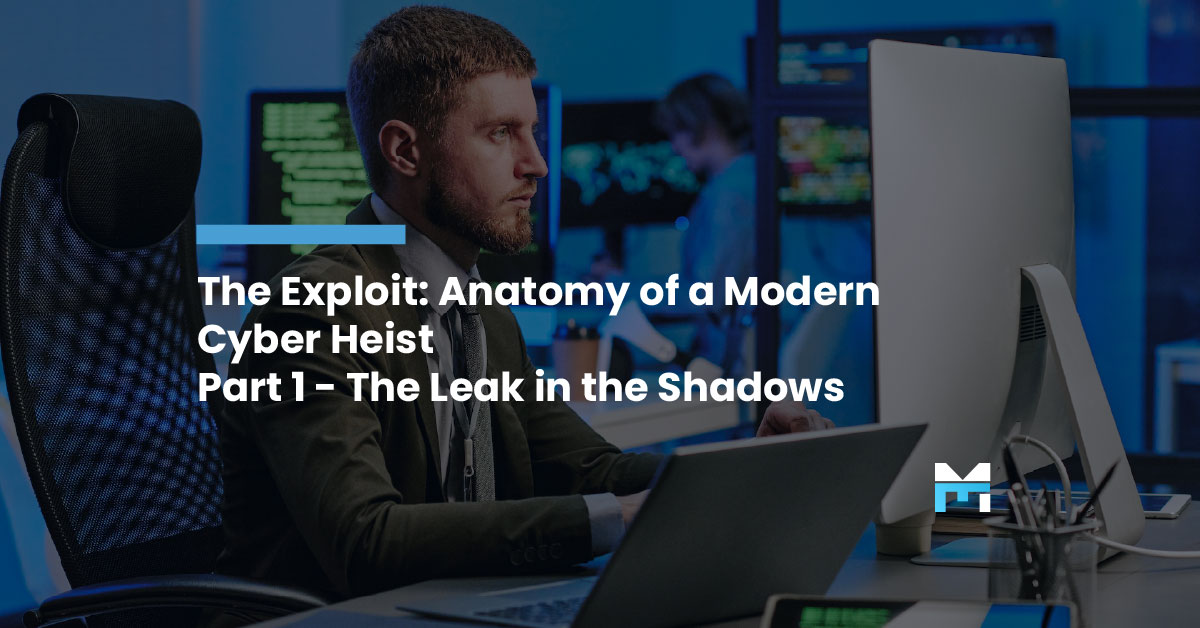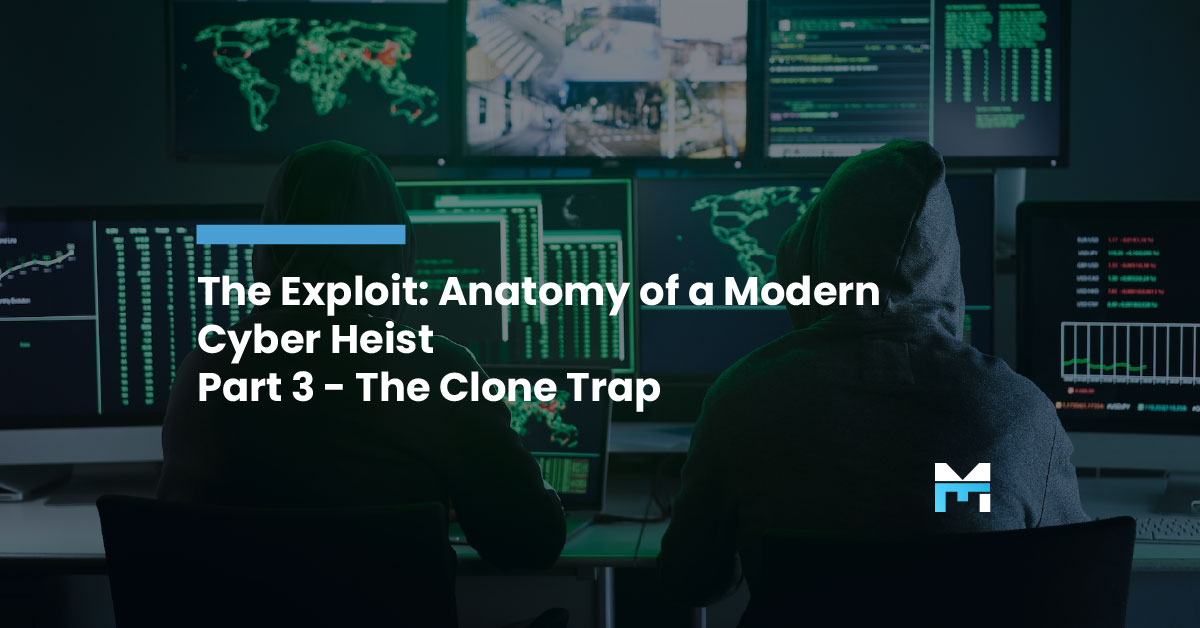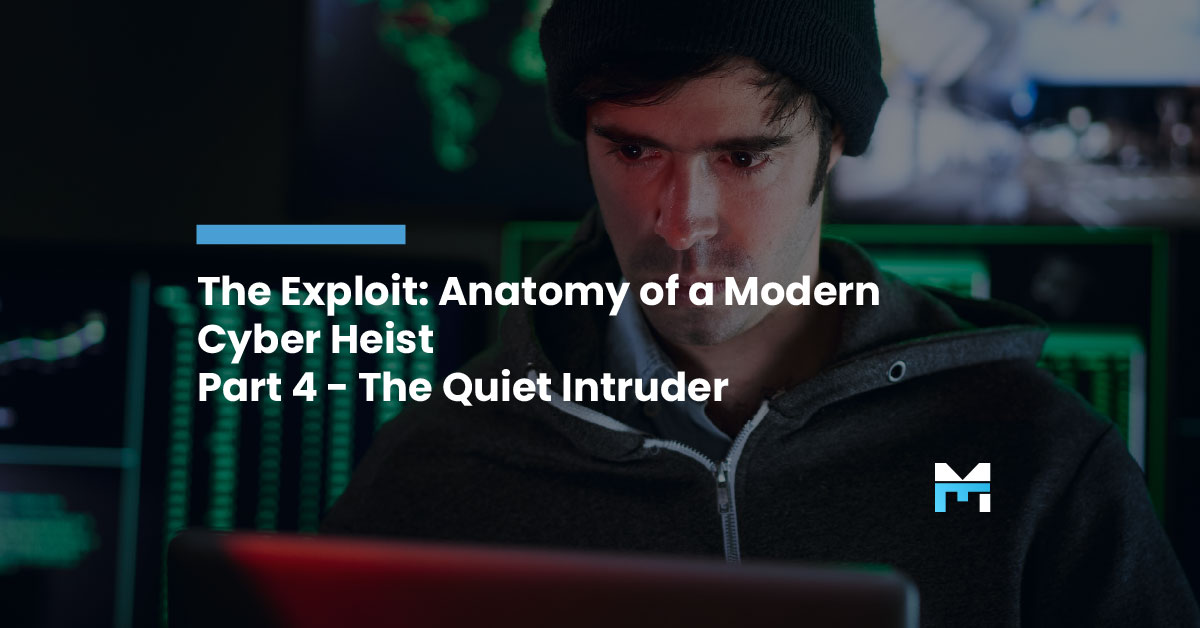The Exploit: Anatomy of a Modern Cyber Heist Part 3 - The Clone Trap
Chad’s login credentials weren’t just stolen—they were live streamed. Not in the Netflix or Hulu sense but in that every keystroke, every click,...
Information Security Compliance
Add security and compliance to Microsoft 365
BI Reporting Dashboards
Realtime pipeline insights to grow and refine your learning operation
Integrations for Banks & Credit Unions
Connect LOS, core platforms, and servicing system
Productivity Applications
Deploy customized desktop layouts for maximum efficiency
Server Hosting in Microsoft Azure
Protect your client and company data with BankGrade Security
3 min read
Justin Kirsch : May 12, 2025 12:15:00 PM

Welcome to part one of our fictional, yet oh-so-realistically plausible series about cybersecurity failures and the lessons every business (especially mortgage companies) must learn to stay safe. Take notes, because by the end of this post, you’ll realize Chad’s mistake could easily become your own.
It was a quiet Tuesday morning at CYA Finance. The coffee machine burbled softly in the corner, papers shuffled across desks, and nobody would ever have guessed a storm was brewing. Chad, a mid-level operations Manager, was halfway through his second cup of black coffee, his mind half on the task of going through his emails and half on the new brewery down by the waterfront that was supposed to have amazing craft beers.
CYA Finance was a great place to work and its leadership considered themselves to be stringent on cybersecurity, making sure the company’s data and communications was protected by solid firewalls, employees regularly changed their passwords, and sending out quarterly remedial training videos that reminded all employees that “cybersecurity is everyone’s responsibility.”
Neither Chad, nor anyone else working a CYA Financial could imagine the storm that was brewing, a nightmare of Elm Street proportions with an invisible threat lurking in places nobody can see. A slick, calculated, and very patient hacker team was gearing up to target Chad and CYA in a cyber heist that would decimate their data confidentiality promise and wipe out their finances.
Poor Chad, so glad Monday was over and looking forward to locking down a time when he could meet his friends at the new craft brewery, considered himself to be reasonable competent in doing his part to protect the company against cybersecurity threats; he had no idea he was about to become the unwitting lead in a breach that would ruin his company.
It started where many breaches do: on the dark web.
A threat actor, calling themselves NullGhost, had been scanning underground forums, auction sites, and breached credential dumps. It wasn’t personal—not at first. Just a routine sweep for low-hanging fruit. And that’s when they found it: an old database from a defunct webinar platform. Among the millions of leaked emails and hashed passwords, one stood out.
chad.m@cyafinance.com
The password hash was weak. Crackable. Within minutes, NullGhost had the plaintext: a slight variation of the company name and the year Chad got hired. Rookie mistake.
But NullGhost wasn’t here to smash and grab. They were a patient predator. They wanted to know who Chad was.
A quick social scan showed Chad had recently posted about closing a major refinance project. Lots of celebration, a shoutout to his vendor partner, and a proud mention of hitting his quarterly goals.
"Big things coming soon. Couldn’t have done it without my team and our awesome partners."
NullGhost dug deeper. A vendor mentioned in the comments. A photo of Chad at a work happy hour with his ID badge partially visible. A humble brag about working hard and moving up from Assistant Manager the year before. Enough to build a profile—and enough to weaponize it.
This was recon, plain and simple. The kind of recon that companies rarely see coming because the data isn’t behind a firewall. It’s out in the open, scattered across public platforms and old breaches.
And it’s exactly how attacks begin. Not with zero-day exploits, but with regular people and a little too much information.
Chad had no idea his old password was compromised. He didn’t know his vendor post and job title gave hackers a perfect target. But NullGhost knew. And they were just getting started.
As the use of technology continues to advance and become more integrated into our daily lives, so does the risk of cyber attacks. And while many companies invest in sophisticated firewalls and security measures, there is one area that often goes overlooked - human error.
It's easy to think that only highly skilled hackers can infiltrate a company's data, but the truth is that most attacks begin with something as simple as leaked credentials or exposed employee information. And unfortunately, these types of mistakes are not uncommon. In fact, it's estimated that over 80% of hacking-related breaches involve stolen or weak passwords.
This is where proactive measures come into play. Rather than waiting for an attack to occur and then reacting to it, businesses should take steps to prevent vulnerabilities in the first place. This can include implementing multi-factor authentication, regularly updating passwords and security protocols, and providing ongoing training for employees on how to identify and prevent cyber attacks.
Ultimately, cybersecurity is a continuous process that requires both proactive prevention measures and effective incident response strategies. By staying vigilant and prioritizing proper security practices, businesses can greatly reduce their risk of falling victim to cyber attacks. It's crucial for companies to understand that human error is often the weakest link in their cybersecurity chain.
Coming up in Part 2: The Perfect Phish
Someone's about to get an invoice they can’t ignore—and it's not from who they think.

Chad’s login credentials weren’t just stolen—they were live streamed. Not in the Netflix or Hulu sense but in that every keystroke, every click,...

Two weeks later, Chad was sitting at his desk, nearly vibrating with excitement. It was Wednesday, hump day, and he was finally going to meet some...

Three weeks had passed since Chad clicked that fateful link.